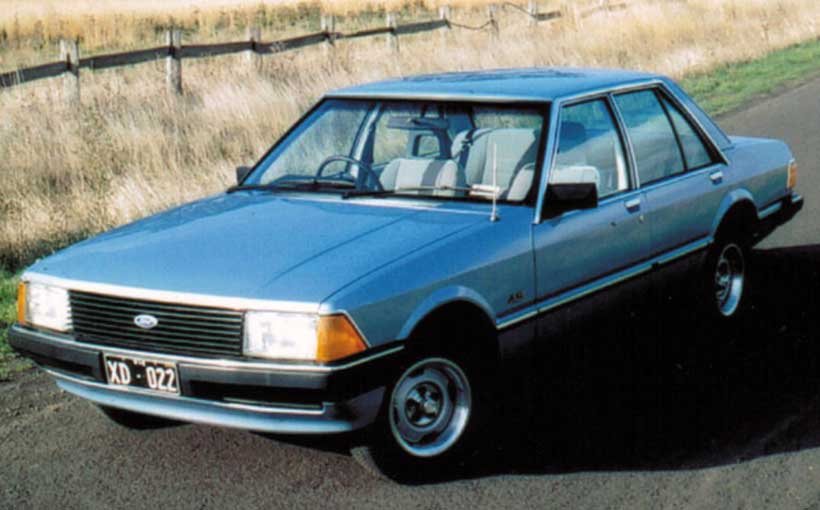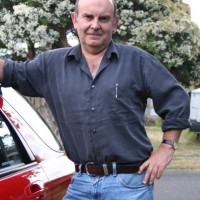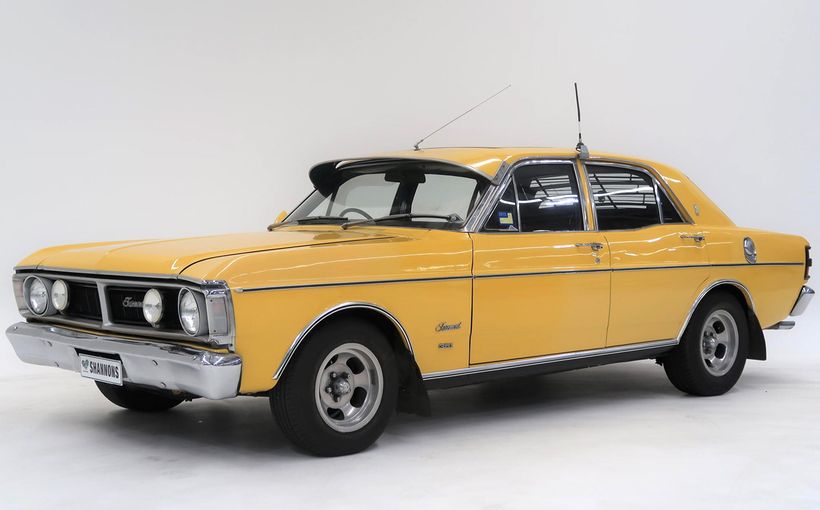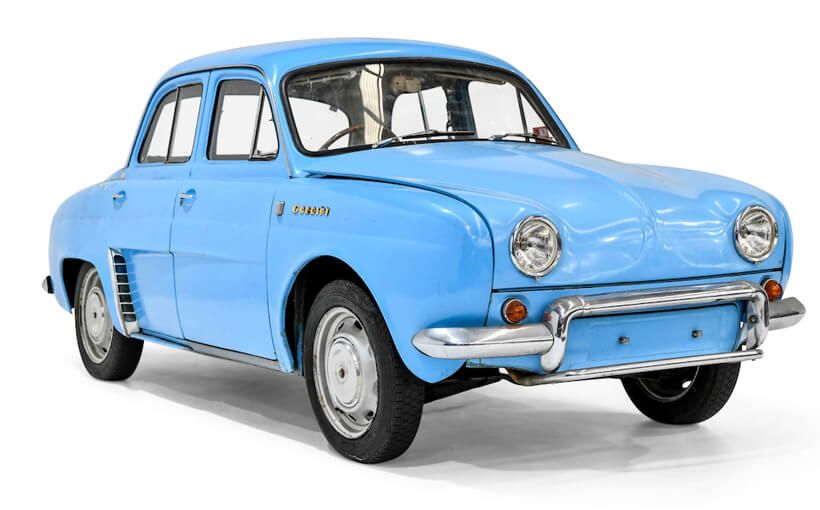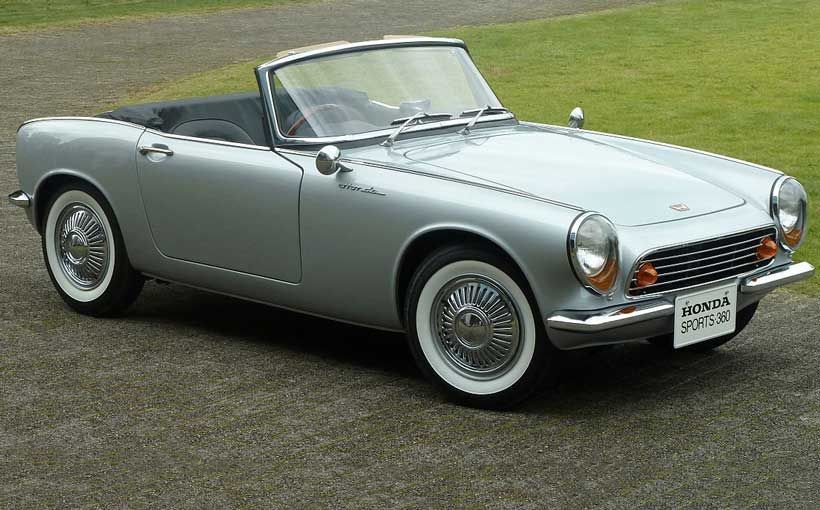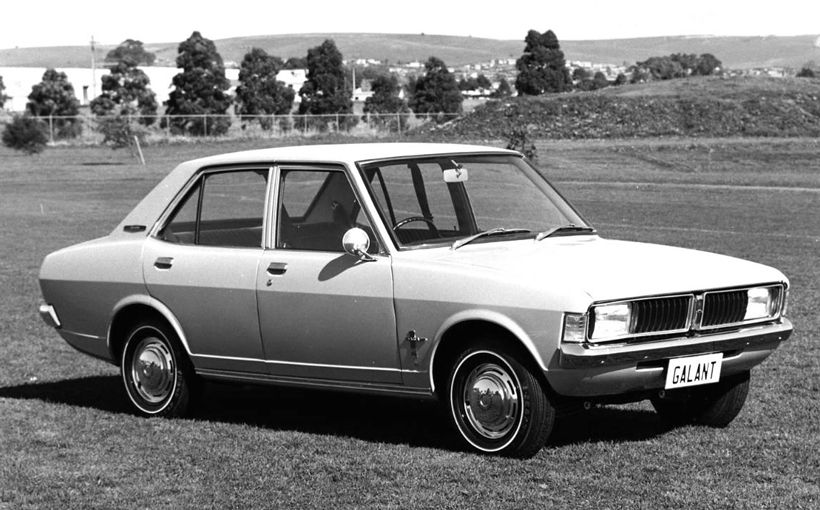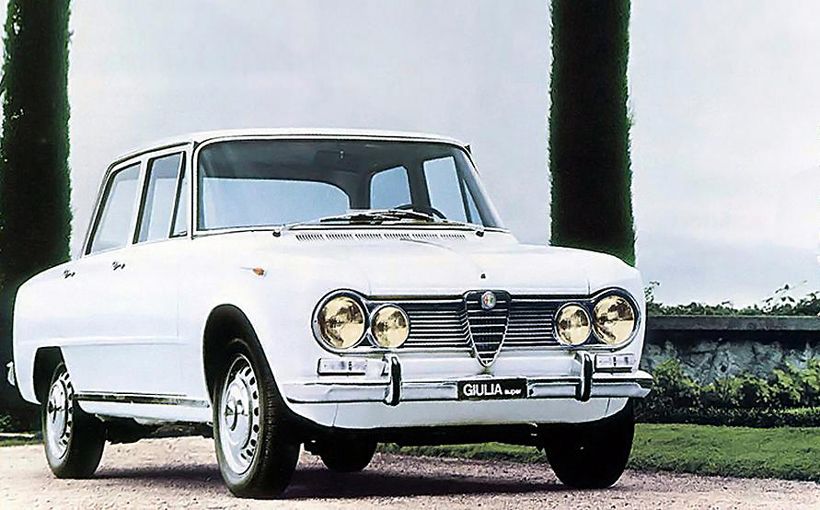1979-82 Ford XD Falcon: Was Ford Robbed?

The XD Falcon demonstrated that Australia had the skills by 1979 to integrate the latest engineering and materials advances from anywhere in the world for a unique Australian design still tough enough to meet local full-size family car needs under the worst conditions. As the sole all-Australian rear drive model with this capability for nine years, it saved the local industry by forcing rivals to match it. Yet when it was overlooked for the 1979 Wheels Car of the Year, the XD Falcon was presented as a lemon along with the other 1979 releases after the award was withheld. Fortunately, Australian buyers knew better.
Project Blackwood
Although the HQ Holden is correctly regarded as the first all-Australian family car design, it was a slave to a management culture that was still US-oriented. The bottom line was that it had to deliver a healthy return to Detroit while reflecting the personal priorities of US engineers yearning for the smooth, straight roads of home. Its under par six-cylinder engines and transmissions, poor handling, park bench seating, standard cross-ply tyres and drum brakes hadn’t moved the bar since the first 1948 Holden. In some areas, it was worse as a comparison at the time highlighted.
Ford’s XA Falcon and Chrysler’s VH Valiant were a little better in some areas, worse in others. They too were still being shaped in several areas by US priorities, often offshore.
Ford had a fully-functioning, locally-staffed Research Centre by the early 1970s. It was more than a match for Holden’s Design Centre established in the late 1960s. Yet Ford’s XC Falcon replacement, for much the same reasons that the HQ Holden could never reflect the depth of Aussie talent at Holden, was heading for disaster under a US culture.

By late 1973, Blackwood (as the next Falcon was known) alternatives were being assessed under the black rolling clouds of several fuel crises. Stretching the TE Cortina (Ford’s direct European rival to the Opel Rekord which formed the basis for the VB Commodore) was investigated and costed. The long list of fixes required for the existing Cortina version before adding new variables saw it scratched immediately.
Another option was the European Ford Granada, a model with a much longer wheelbase than the VB Commodore/TE Cortina (109in/2769mm vs 105in/2668mm). It was no coincidence that Ford supplied a road test example to Australian media for feedback during this period as it was a front runner.

However, exhaustive testing at the You Yangs proving ground exposed how much needed to be spent on toughening the Granada up for local requirements. Costly tooling for the Granada’s independent rear suspension and V6 engines made no sense as long as ground clearance and towing remained high priorities.
Ford’s young product planners recall being sent to supermarket car parks and other venues around Australia to count the number and types of vehicles with tow bars. This reflected Ford’s pragmatic approach at the time (as established by Bill Bourke, Max Gransden and others) that existed across engineering, sales, marketing and dealer management. Before today’s SUVs arrived, their real world research confirmed the only tow car solution back in 1973 this side of a light truck or crude 4X4 was an Aussie family car and its derivatives.

By 1978, baby boomers and their young families would be ready for an escape in a caravan or on the water. Their empty-nester parents were already defining the “grey-nomad” phenomenon, the first with the life expectancy, funds and time to travel around Australia. The weekend box trailer for trips to the tip and moving bulky objects was part of Aussie culture.
The numbers were so high that Ford had to place towing (53 per cent of Falcons had tow bars) and all road capabilities (35 per cent of Falcons lived in the bush) high on the list. It also cemented the need for a long wheelbase wagon and a Fairlane prestige model, both of which were popular tow cars. Stretching the Granada for a long wheelbase wagon and Fairlane did not add up financially. It wasn’t wide enough either after three-across rear seating also emerged as a priority for fleets (over 50 per cent of sales) and private sales before people movers had yet to establish themselves in the market.
The new US Ford Futura/Fairmont/Futura and Mercury Zephyr range from the highly successful Fox program appeared to offer a solution with its weight reduction and trim styling. An initial local assessment soon revealed that it would be as risky as the first US Falcon and would also involve massive investment for a long wheelbase wagon and Fairlane.
Falcon utes and vans also had a steady market during this period. As soon as they were added to the mix, all roads quickly led back to revising the existing Falcon even if the Fox program would later deliver the tailgate for the XD Falcon wagon that made it such a smart looker.

The XC facelift then became the first of two stages.
After the XC, it emerged that visiting US executives were more intent on pleasing Detroit with another cut-price Falcon facelift than producing a competitive new model. The new design involved little more than adding TE Cortina front and rear styling (including bumpers and end caps) to the squared-up XC cabin section.
This caused an internal mutiny amongst the Australian staff left to execute this strategy. In their minds, it would lead Ford Australia into certain ruin and they would be wearing the consequences long after the Americans went home. The young design staff first to emerge from Ford’s new Research Centre, along with their peers in various management and engineering roles, had been trained too well and achieved too much to go along with it.

The quantum shift that channelled this 1975 conflict into such a productive outcome was the 1970 appointment of Brian Inglis (now Sir Brian), Ford Australia’s first Australian-born and educated President. It also helped that a young Edsel Ford II had been posted to Australia to learn the family business. All key staff responsible for Blackwood were under 40 and all agree that it was Sir Brian Inglis’s car. It couldn’t have happened without him.
Red Alert
Two events in 1976 galvanized Ford’s future direction. The first was the news that Holden would downsize. Ford’s planners sourced photos of the Opel Rekord and Senator, before importing the cars themselves. They cut out the profiles of both and superimposed these over shots of disguised Holden test cars. They correctly concluded that the new Holden would be neither Rekord nor Senator but a composite of both.
As Sir Brian Inglis confirms: “We knew about the downsized General Motors product, long before it was released here. After we computer modeled their smaller car, their projected fuel economy would make our car look like a real gas guzzler.
“If we knew about their Opel product, they knew what we were doing. They would have laughed themselves silly on their way to work and back every day. You can hear Holden’s finance guys telling their engineers, don’t do anything to the engines when we have so much of an advantage over that great big Ford gas guzzler.”
Local Ford staff assigned to Ford of Europe for the new Escort had already been asked to keep their colleagues back home up to date with photos and progress on the next Granada. They even had to source various new European headlight designs from spare parts so no one would know what Ford was up to.
The second circuit breaker was a flying visit to Europe by Inglis. By early 1976, he had seen what Ford was developing in West Germany into the 1980s. After the XA, which, in his words, “overshot the market in styling”, Inglis had learnt that “the Germans were the best judges of what the Australian public would accept.”

Inglis responded by insisting on a two-sided clay, the US solution on one side, the Australian proposal on the other. The division was now running so deep that it was not unknown for the Aussie side to be changed overnight after the local camp had gone home.
As soon as the head of the US faction was called back to the US on a business trip, the Aussies took over the complete clay. Inglis was so concerned about what was going on, he would visit the Research Centre several times a day, after hours and during the weekend.
The Australians wanted a low waistline and slimline doors with thinner glass which would force the scrapping of existing hinges and locks for a big boost in costs.

The result prompted Inglis to bring out future Chrysler luminary, Trevor Creed, from Ford of Europe to produce a Falcon clay that reflected the coming Granada. As Inglis recalls, “We had no scruples about importing some of the Granada’s styling cues, yet you would be surprised at how different they were.”
After working around the clock, Creed completed the clay within weeks. His proposal was trialled locally. After it hit the spot, a final clay integrating his work with local efforts was sent to Dearborn for approval.
Inglis also credits his former local design chief Jack Telnack for his input. Telnack had since become chief of US Ford design and was working on the third generation Mustang due at the same time as Blackwood. Telnack had arrived at the same design conclusion as his former Australian colleagues opting for a sloping nose, lowered belt line and better use of space. It was why the Dick Johnson Mustang shared many styling cues with the local Falcon and Fairlane range and looked at home on local race tracks.
“Every day we would talk about it,” says Inglis of the Telnack influence, “we wanted a sloping bonnet and plenty of glass which required a low belt line. They couldn’t meet up when the bonnet had to start high with our big engines so Jack came up with this idea of using the mirror to hide the step between the top of the bonnet and the side window line. That mirror won a design award.”
The final piece of the jigsaw was the 1978 promotion of Andy Jacobson as Ford Australia’s new chief designer after he had already managed the new design approach since 1976. It was a popular appointment and despite his US background, he was a staunch supporter (and protector) of what the Australians wanted.

The new design soon tested the limits of door hinge, glass and lock technology. A talented Ford of Europe engineer who had been posted to Australia had returned to his native Germany then left the industry. Again, local staff based there were told to find him and ask him to come back to Australia to help re-engineer the special locks, hinges and internal window mechanisms required for the XD’s radical slimline doors while housing side impact barriers. These doors set new local records for glass versus sheet metal area as well as reduced thickness.
If the US faction had prevailed, the XD Falcon would have surfaced looking similar to the WB Statesman with a Volvo 240 nose. Holden was effectively forced down that path to create a LWB model from its 10 year old HQ.
Although the styling would make or break his new XD Falcon, the news of Holden’s downsized Commodore made this the least of Inglis’s worries. Yet the light airy style and lack of visual flab was perfect for what was coming next. This also created a window to further tweak the styling.

Ford’s Weight Watchers
As Inglis tells it: “We didn’t have the resources to start again and build 90 per cent local content into an all new overseas model like the Commodore. We wanted every weight reduction program that the US could give us as they were doing something similar.
“We had to invest heavily in a new plastics plant (as Holden was forced to do later for the Camira), use aluminium wherever we could, lighten the car at the design cost stage – aluminium flywheel housing, aluminium heads, everything we could possibly reduce in weight.
“We were the first local car with plastic bumpers, plastic instrument panel, alloy head, plastic fuel tank. Volkswagen had already introduced a plastic fuel tank in the Passat. They had a small simple tank, we needed a huge and fairly complex doughnut tank, so we went to Germany, talked to VW who thought it wasn’t feasible. We built one anyway and it proved hugely successful. But it was all to reduce weight and making use of the available space.”
None of this would have happened without the direct intervention of Henry Ford II explains Inglis: “I recall going to Detroit with a proposal that was expensive and controversial. Detroit’s powerful Finance office had a huge array of comparisons around the world to draw on when assessing a program’s feasibility. If it had never been done before, you really had to convince them.
“My proposal involved a lot of money and they didn’t agree with it. Because I wouldn’t back down, they spared nothing to combat me in the final committee. They had tremendous audio-visual facilities which were used to full advantage to put a dampener on everything we said.
“At the end, Henry Ford II said he had heard our proposal, heard the finance office’s concerns but concluded: ‘I like Australia, I think we’ll approve it.’ Then he simply said: ‘Do what needs to be done!’
“We still had our big car which soon proved to be more economical and that eventually gave us market leadership. It might have been a good looking car but then having to spend all that money on weight reduction because of the fear that Holden’s smaller new car would demolish us, was the biggest risk we ever took. It came off and that was the nice part.”

The XD’s Achievements
- Weight was cut by 116kg on release, then another 24kg in mid-1980 on the arrival of the alloy-head built by Honda. This was despite the addition of a 5kg heavier sound deadening package. Combined Ford and Honda input had made the new alloy-head even more efficient adding further gains in fuel economy and output to those already made by the XD’s initial cross-flow engines over XC.
- Base XD weight was 1367kg (1979)/1343kg (1980) compared to Commodore’s 1219kg and XC’s 1483kg.
- This level of improvement applied to not just a single XD sedan, it was applied to a new and spacious wagon, commercials and long wheelbase Fairlane and LTD models.
- Semi-sealed cooling system and electronic ignition standard on all sixes from mid-1980.
- Base XD 3.3 manual by mid-1980 offered 84kW and 230Nm with a City fuel figure of 13L/100km and 8.5L/100km Highway. The entry VC Commodore Four generated 11.7L/100km City and 7.6L/100km Highway with 54kW and 140Nm. Similar comparisons with other fours successfully challenged the perception that Australians had to sacrifice a seating position and performance to save fuel.
- The XD wheelbase of 2818mm was much bigger than Commodore’s 2668mm yet the 4737mm length was only fractionally longer than Commodore’s 4705mm. Critical XD shoulder width was 1520mm compared to 1400mm for the Commodore. The new XD front structure allowed a 20mm increase in front track.
- Fuel tank capacity was 77 litres compared to 63 litres for the Commodore Six which posted comparable or worse fuel economy. Plastic tank saved 11kg alone while freeing-up extra space in the boot.
- Injected moulded bumpers not only saved 19kg but could now absorb four km/h crash impacts without damage. Plastic body finishers instead of lead fill, plastic inner front guard splash shields, plastic air intake ahead of windscreen, plastic petrol cap, plastic power steering reservoir and plastic horn body were just some of the items representing the XD’s new approach now taken for granted.
- New XD glasshouse was 20 per cent larger, boosted all round vision from XC’s 309 to 332 degrees. Driver could also see much closer to the front and rear of the vehicle.
- Aero design reduced drag by 10 per cent over XC.
- Extensive use of HSLA (high strength low alloy) steel including window winders, wheels and door intrusion bars (which saved 15kg alone).
- Retention of proven XC suspension but every part was re-engineered as part of an RTS-type upgrade including spring rates, shocks and anti-roll bars for more compliant ride and sharper handling. Previous steering system retained to meet market preferences split between manual and power steering remained a compromise. XD Falcon body with extended rails for rear leaf spring hangers retained full-strength towing ability compared to VB Commodore body which would stretch and pop the bootlid unless tow bar reinforcement extended ahead of rear axle.
- See-through head restraints improved vision and contact between front and rear passengers while reinforcing the European appearance outside.
- Deletion of speedo cable as noise path. Electronic transmission sender unit improved accuracy and needle stability.
- Electronic fuel level sensor.

For $130 million, which included the tooling for the alloy head and other derivatives (or $20 million more than the VB Commodore program), the XD was way over the initial $72 million budget but US sources confirmed later that this was just 25 per cent of what it would have cost in the US. There was no argument after Ford was left with an unrivalled long wheelbase wagon, competitive Fairlane/LTD, coupe utility and panel van. It also left more competitive engines for the Cortina 6.
It is significant that both Henry Ford II and Edsel Ford II had taken such a personal interest in the project that they both endorsed it personally at its local launch (which was themed using the music from Stanley Kubrick’s 2001 Space Odyssey).
It was often quoted at the time that the car would have been a success in the US amidst claims that some at Dearborn wanted it. This was arguably the moment when Falcon exports should have commenced before the Australian design strayed too far from other rear drive US Fords.
For almost the same money, Holden was left with a single VB Commodore sedan and its old engines. It was then forced to hastily add an imported Opel Rekord wagon rear to create a local wagon then undertake the blue engine upgrade.
As Inglis concluded: “You can see the cold hand of the finance department. The auto business is a high risk business, get it wrong and you can’t suddenly change everything. Holden had to upgrade their engines but time was now against them.”
Holden then had to fund yet another rework of the HQ for a WB range of utes and Statesman/Caprice, by which time Commodore sales had stalled and Holden had to be rescued by Detroit. The resulting VN Commodore range then progressively matched the XD range with long wheelbase wagon, ute and Statesman derivatives from 1988.

The 1979 Wheels COTY Controversy
There were six criteria for the Wheels Car of the Year Award in 1979. They included Advancement in Design, Engineering Excellence,Value for Money, Safety, Utilisation of Resources and Performance of Intended Function.
The debate was, and still is, not about whether Wheels was justified in not awarding the XD Falcon the 1979 COTY award. It was more about how the VB Commodore could win it in 1978 and why there was so much hyped lemon negativity when the XD Falcon didn’t just one year later.
So how did the VB Commodore and XD Falcon stack-up against the Wheels Criteria?
Advancement in Design: The Commodore did revolutionise how Holden built a car and was a giant leap in dynamics/steering/ride/handling with several worthy advances including rack and pinion steering, the “wet strut” and its voided bush rear suspension. Styling, cabin layout and use of space were brilliant.
Yet Wheels was clearly seduced by the SL/E V8 versions as the entry level sixes and transmissions were primitive even if their shortfalls were overshadowed by the brilliance of the rest. It was also a small car (same wheelbase as Cortina) trying to look big. The bottom line was the all-important and critical gains in performance and fuel economy were not there to cover the big loss of space and toughness over the Kingswood.
It is true, the XD Falcon could never match the dynamics of the sometimes twitchy VB Commodore but was a far more relaxing and less taxing package to drive over long Australian distances, especially with a full load – not a scenario that the media often undertook. The XD Falcon all but matched any fuel consumption or performance gains of the VB Commodore yet preserved the ruggedness and size still required by the majority of Aussie car buyers. Not as flashy, engaging or emotional perhaps but an advance in design nevertheless.
In terms of long life and durability, the Falcon’s new plastics were better quality and held their appearance longer than many of the colourful new cabin components in the Commodore.

Engineering Excellence: As a brand new, novel German design, the VB Commodore was a powerful and emotional contender in this category. As a four cylinder German Opel Rekord rival to the Cortina and Sigma family cars, it was outstanding. Except it was marketed as a substitute for a full-sized Aussie six nor had anything changed under the bonnet.
Wheels pointed to the lack of integration in the XD by comparison citing the steering, shallow boot and the compromised access to the rear seat. Yet there is no mention of the XD’s much bigger fuel tank, absolutely essential in 1979 for a serious Aussie family car, or the stretching room for three once you were inside. Nor was there any mention of the dramatic decrease in rear overhang and the big advantage in departure angle so critical in the bush when towing or traversing gullies.
Value for Money: With potential rivals nobbled by stiff import duties, this was the one category that both cars owned with equal strength.
Safety: Both cars represented big advances in this area on paper. Real world figures suggested the larger size of the XD Falcon came in handy in more serious open road crashes.
Utilisation of Resources: The VB Commodore reduced its carrying capacity in all areas to become more efficient while doing nothing to upgrade its drivetrain technology. The XD Falcon retained and even boosted big car capacity in some areas for the same gains in efficiency. Australians ultimately decided which was the better approach.

Performance of Intended Function: As a popular six cylinder Aussie family car, the VB Commodore proved an unmitigated failure as it didn’t provide much greater amenity than a cheaper and better-made Japanese four. Its rating as a four seater taxi summed it up, a factor that also limited its fleet and police applications.
Nor was it tough enough to cover the wide range of conditions expected of this category of vehicle. Wheels slammed the XD’s antiquated mechanicals (which were much more advanced than the Commodore’s) and leaf spring rear end without acknowledging their suitability for heavy loads and towing, the Intended Function of both vehicles.

This example is typical of how many country Australians specified their much loved XD examples with plenty of ride height, mud flaps, visor and rear venetians to survive endless belting over long dusty roads. As the XD approaches 35 years old, there is no shortage of similar examples still working as everyday drivers especially in rural areas, something that doesn't apply to the first Commodores, Sigmas and Mazda 626s that threatened its existence.
Former Wheels Editor Ian Fraser summed up the XD Falcon Fairmont as “more an identity crisis than a car. Superficially, it goes through the motions of being a real-world sedan, yet retains the disadvantages inherent in the muddled thinking that has for so long bedevilled Australian designed and built cars.”
Based on your experience of both cars, was the entry level VB Commodore a deserving 1978 winner? And with the XD Falcon, did Wheels get it wrong?
Footnote: Although it was widely reported at the time that the XD program was defined by competing US versus Australian interests, it has come to light since the above was published that it wasn’t as simplistic as Americans versus Australians. It is true that the European Granada was looked at but the US Fox platform was scrutinised far more seriously.
The big local concern was the Fox platform’s MacPherson strut end that had caused Holden so many dramas with the VB Commodore. The Fox platform would also have dictated a total re-investment in the manufacturing process, another factor that caused major issues at Holden with the Commodore. Because Ford Australia was committed in the long term to its big inline six and the long wheelbase Fairlane and LTD models, the Fox program would have deleted a big income stream. This was a factor that would later contribute to Holden’s collapse when there was nothing to replace the WB Statesman and commercials.
In the post-Bill Bourke and Jack Telnack era, Bill Boyer was the Design Chief who started to define the look of the XD Falcon program. A conservative American, he was backed by a strong Australian camp who favoured a re-work of the XC with a strong American flavour. Yet it was another American who steered the Blackwood program in its final direction.
Bob Marshall was the Director of Product Development. All design, engineering and planning reported to him. It was his last big job in his career to sell the XD to the board, a task he achieved with considerable success. Starting off in the “American camp”, he became a prime supporter of a far more extensive local program. Design Chief Bill Boyer was replaced by another American in the later stages of design, the flamboyant Andy Jacobsen, who had already been heavily involved as recorded above.
It was Marshall who convinced the late Sir Brian Inglis to bring out Trevor Creed from Ford of Europe. Inglis used his close relationship with Telnack forged during the days when they worked alongside each other at Ford Australia to send Trevor Creed out to Australia, a move that Telnack also strongly supported.
The final acceptance and endorsement of the XD program by the board in Detroit and Henry Ford II himself could only have occurred as smoothly as it did after all the various teams (finance, marketing, engineering, design) had done their homework and were all supporting the final proposal.
Some of the new technology including the plastic fuel tank involved extensive support from suppliers. The original supplier of the VW’s plastic tank was BASF. BASF played a huge role until the tank went into production. For this Australian application, it represented a huge research and development exercise in getting the plastic content right for moulding and durability and involved the developing of new materials and techniques.
The German engineer Klaus Glagow, who had earlier established a strong friendship base with Australians on his last posting at Ford Australia, was an adventurer and glider pilot with a can-do approach to his work. After the Australians convinced him to return to help complete the XD, his innovative work on the door latching mechanisms was critical to the completion of the XD.
The overwhelming take from an insider’s view of the XD program was how driven the final team was, regardless of allegiances to Australia or the US, to build the right car as it was clear that Ford’s local survival was dependent on the result.
Protect your Ford. Call Shannons Insurance on 13 46 46 to get a quote today.

